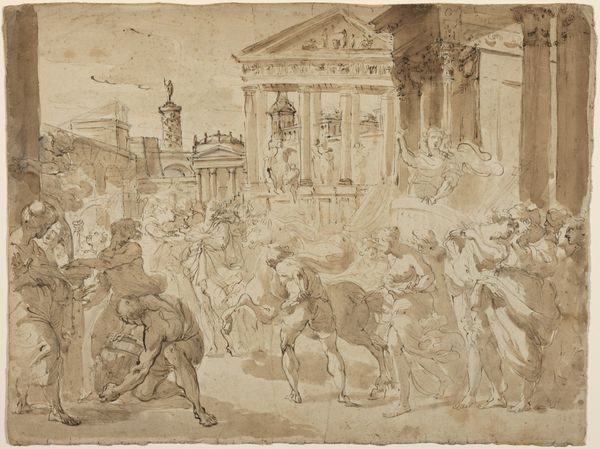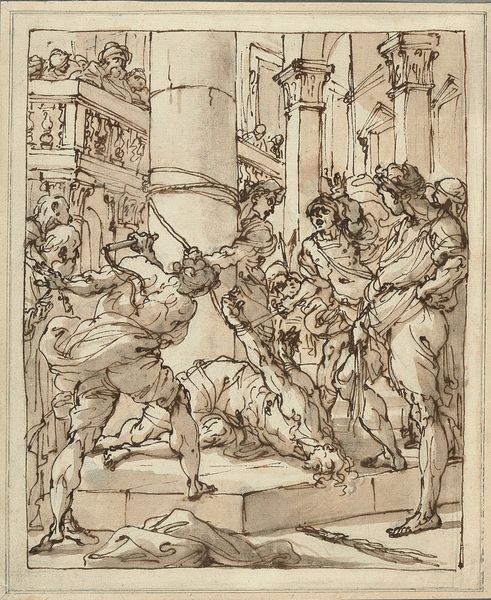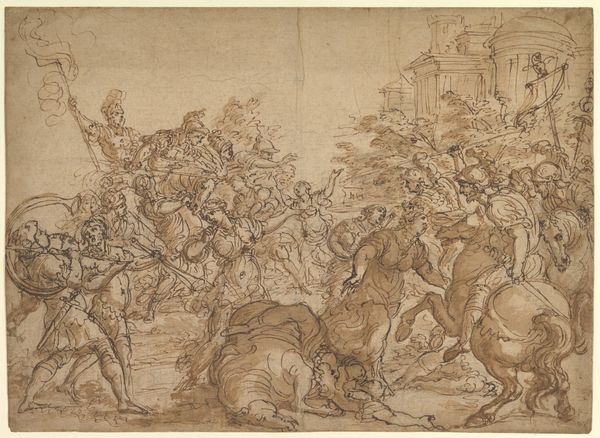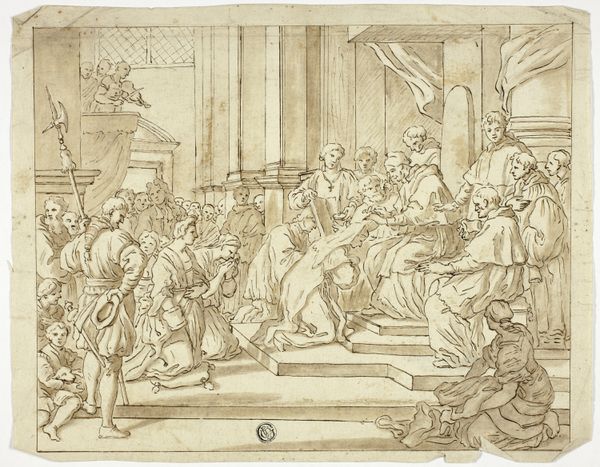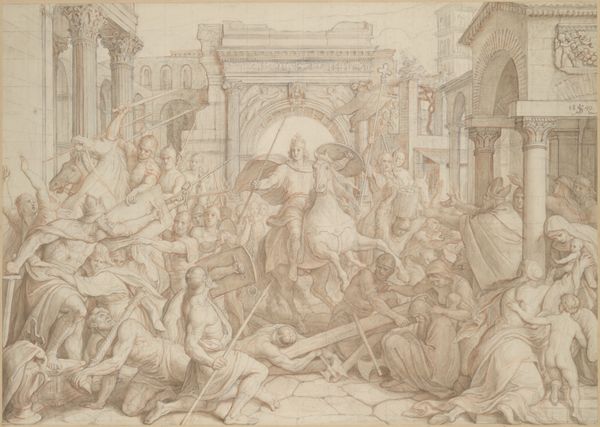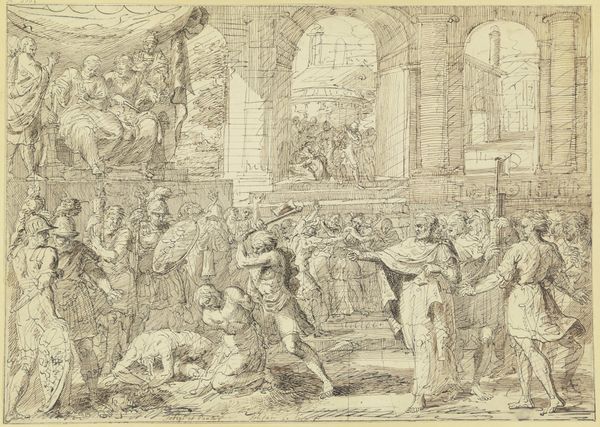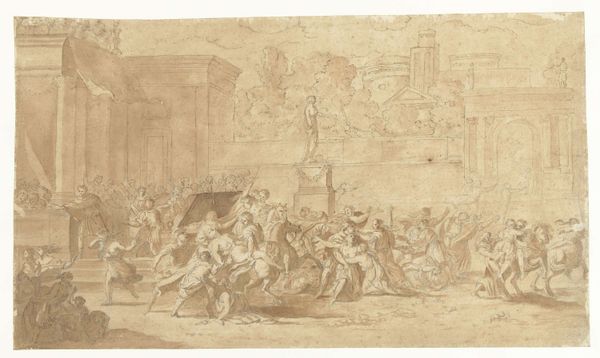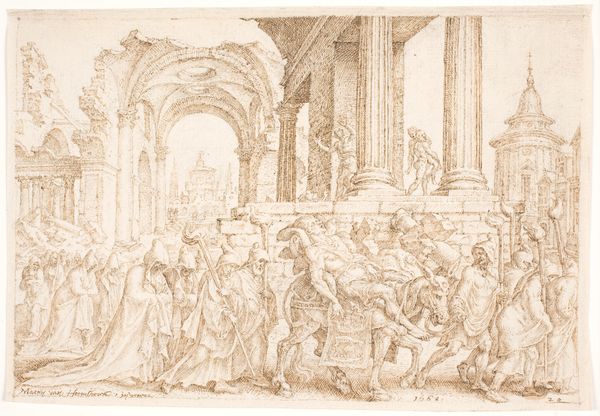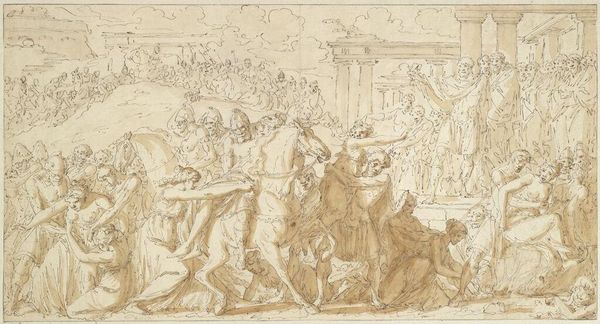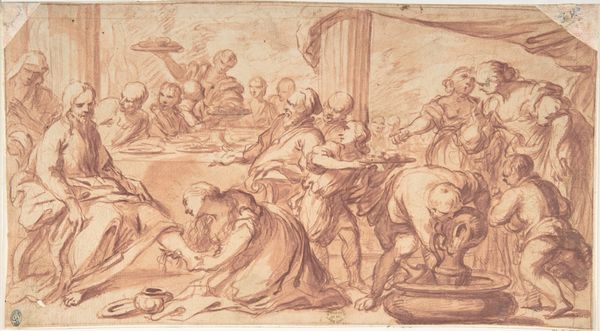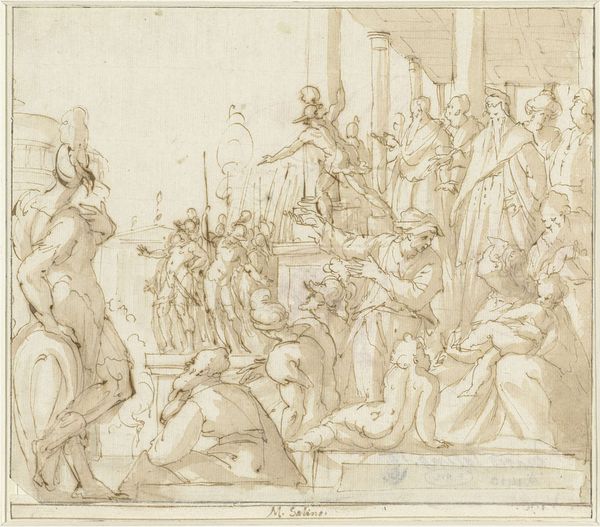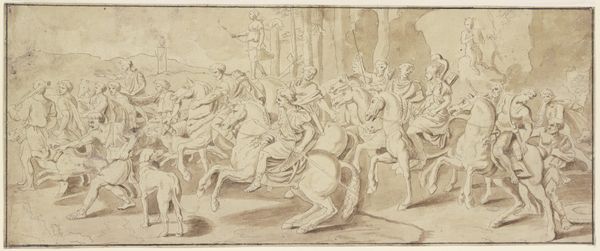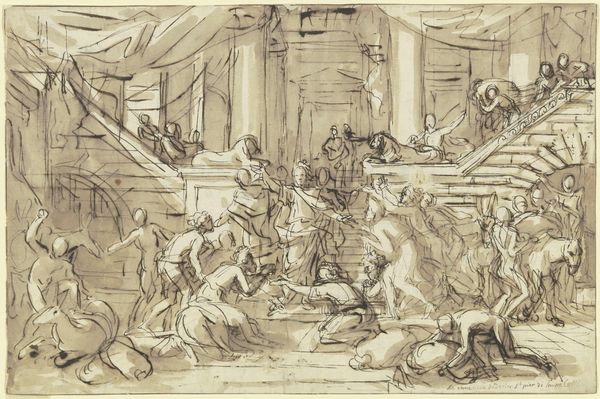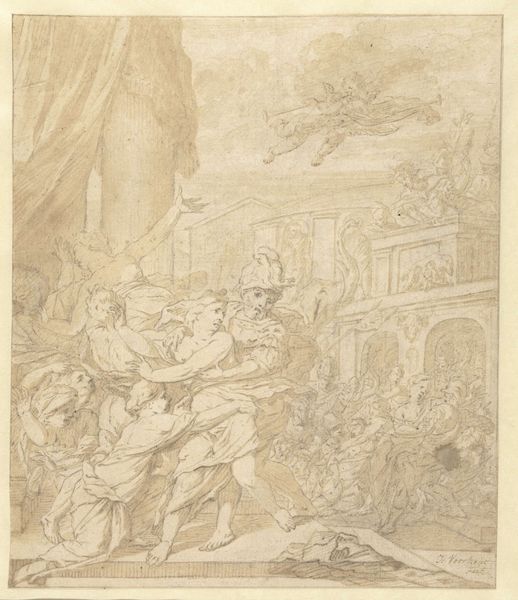
Massacre of the Innocents (recto); Figure Sketches (verso) n.d.
0:00
0:00
drawing, print, paper, ink, pen
#
drawing
# print
#
pencil sketch
#
landscape
#
figuration
#
paper
#
ink
#
pen
#
history-painting
Dimensions: 195 × 332 mm
Copyright: Public Domain
Editor: Here we have an intriguing, undated drawing from an anonymous artist titled *Massacre of the Innocents*. It's rendered in pen, ink, and pencil on paper and depicts a chaotic scene, dominated by classical architecture. I am really drawn to how raw the emotion feels, amplified by the unfinished nature. What strikes you about this piece? Curator: What immediately grabs my attention is how the scene stages a powerful narrative within the context of societal power structures. The "Massacre of the Innocents," historically and culturally, reflects the abuse of authority and the vulnerability of marginalized populations. Think about how artists, throughout history, have used this theme to critique contemporary injustices or question political regimes. Do you see any clues within the architectural setting that suggest the artist’s specific critique? Editor: I do, actually. The use of classical architecture makes me think about how authority tries to align itself with the glory of ancient empires. The historical setting almost emphasizes the timelessness of the brutality depicted, right? Curator: Exactly. This could also reflect the power dynamics within the art world itself. The choice of this dramatic subject matter could be a comment on the types of narratives being deemed worthy of artistic representation and public display at that time. How do you think the choice of a drawing rather than, say, an oil painting, plays into this? Editor: Perhaps it suggests a rawness and immediacy, circumventing the formality expected of history painting. The quick sketch allows the message to bypass some of the usual aesthetic gatekeeping and political grandstanding? Curator: Precisely. The artist seemingly prioritizes conveying an immediate social commentary through the directness and urgency inherent in a sketch medium, rather than polished execution. This piece challenges us to reflect on not only historical events but also how art institutions shape and frame such narratives. Editor: This has made me reconsider my initial reaction. It’s more than just a chaotic drawing; it is loaded with potential insights into socio-political power at the time. Curator: Agreed. The drawing prompts important questions about the role of art as a mirror and a challenge to societal power structures.
Comments
No comments
Be the first to comment and join the conversation on the ultimate creative platform.
